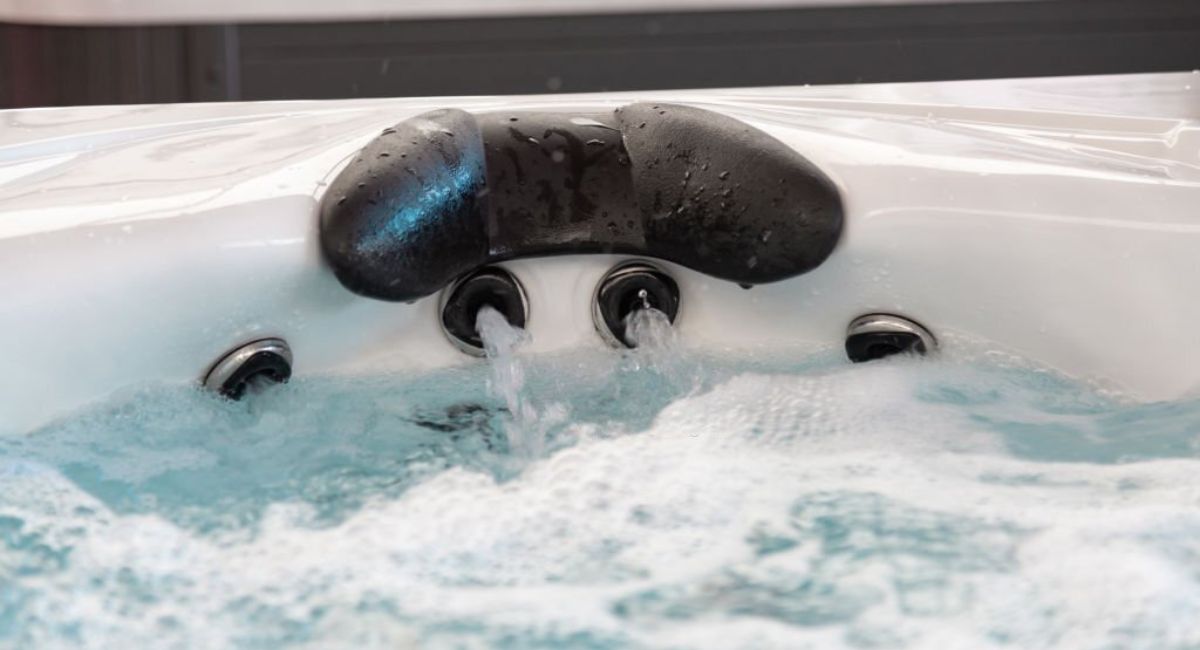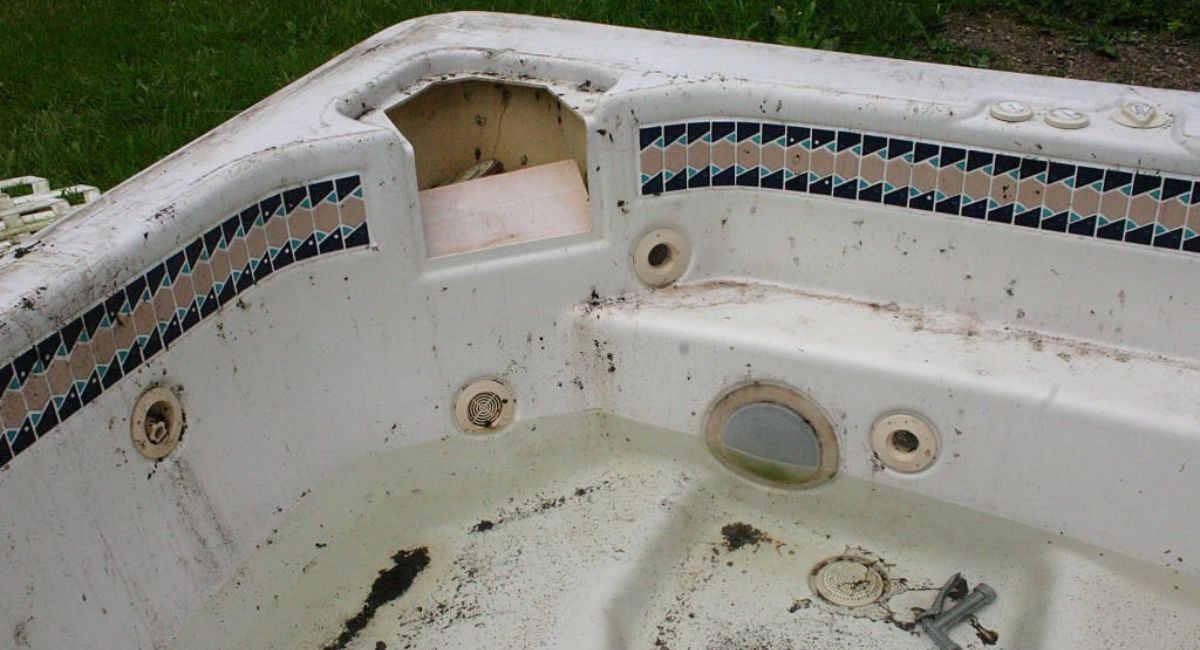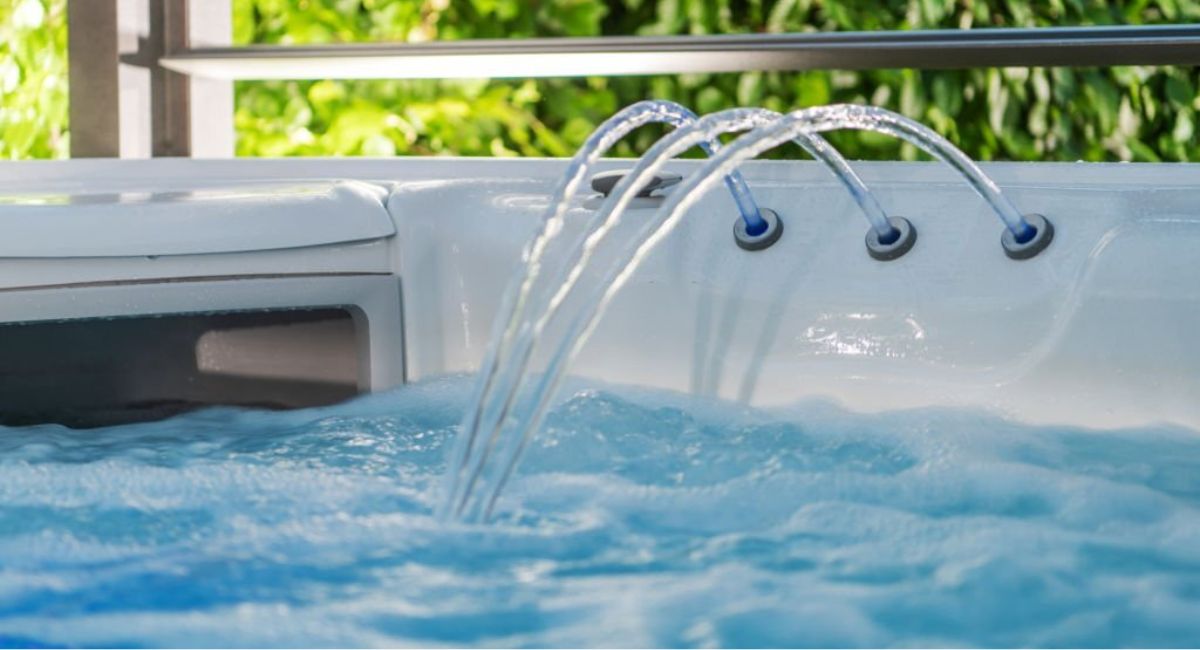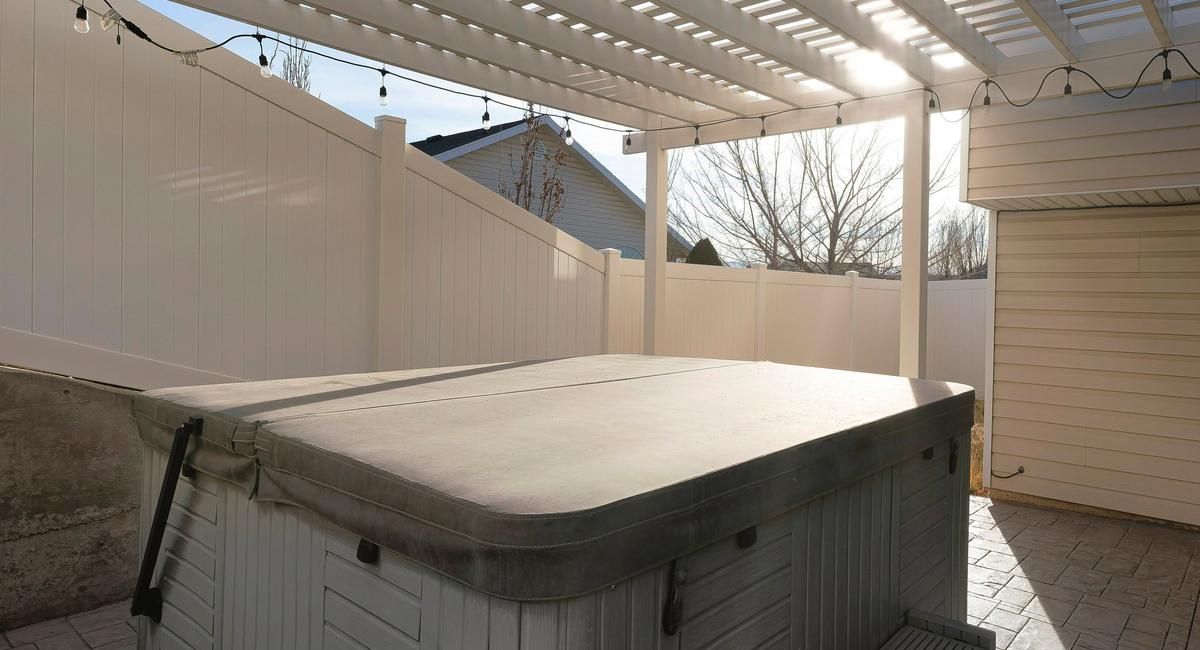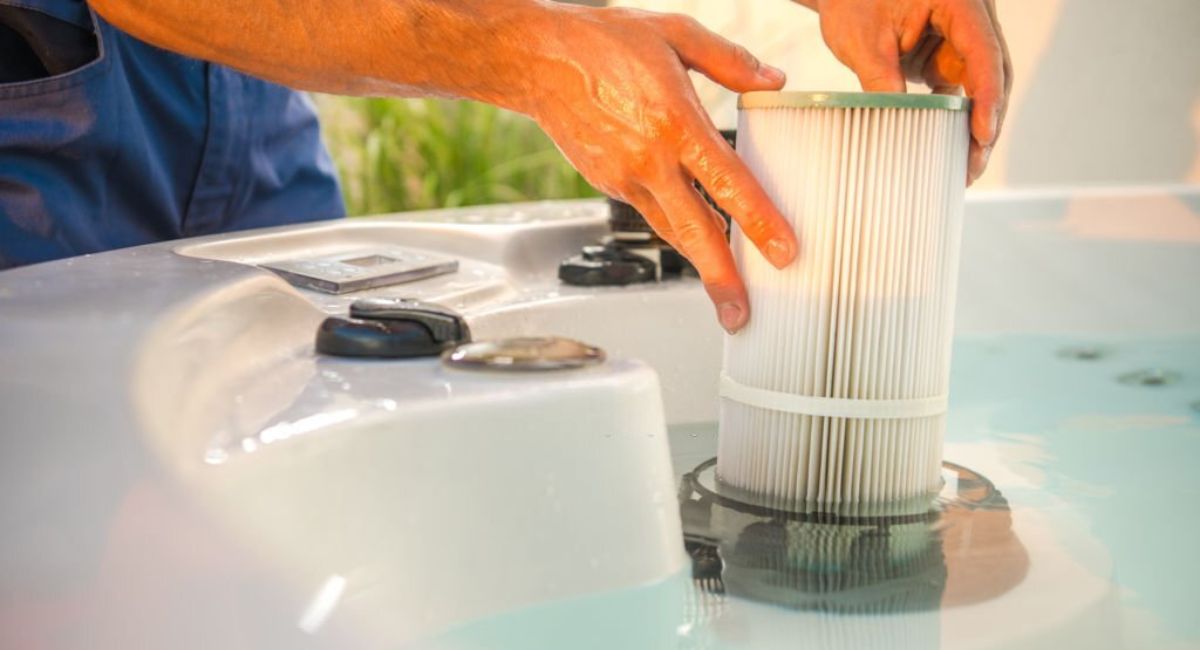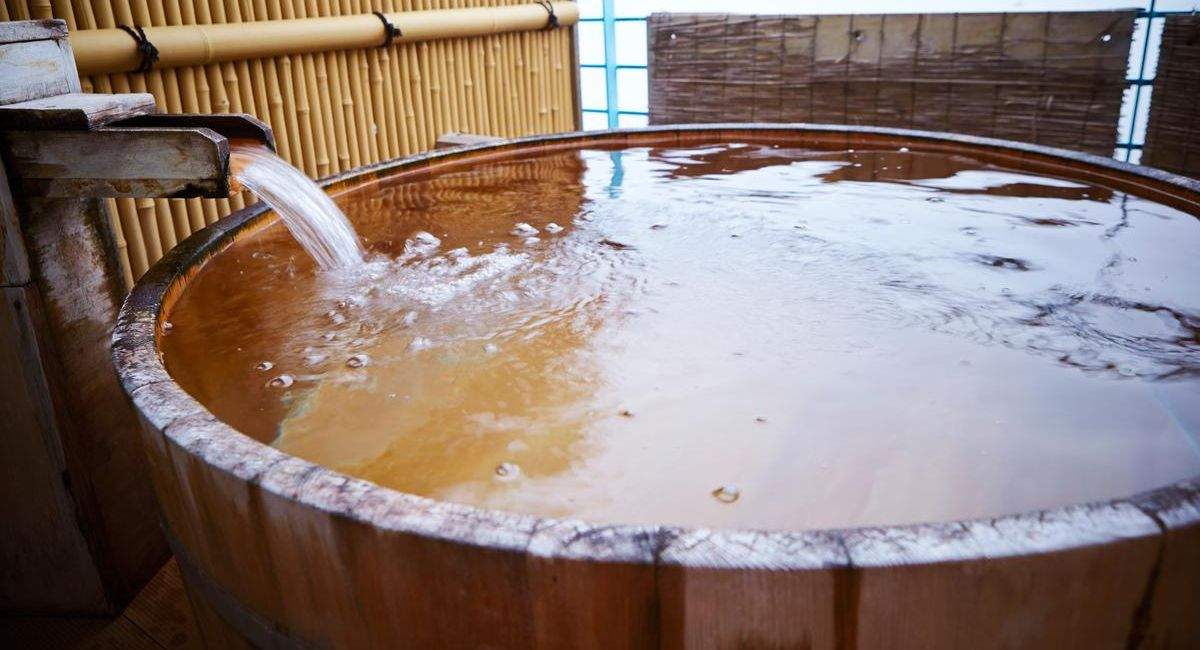When it comes to creating a truly luxurious and relaxing oasis in your backyard, a hot tub undoubtedly tops the list. The warm water, soothing jets, and tranquil ambiance offer a rejuvenating experience that’s hard to match.
However, amidst all the blissful moments, it’s easy to overlook a crucial aspect of hot tub ownership: the maintenance of its pillows. These often-overlooked accessories play a significant role in enhancing your spa experience and maintaining a hygienic environment.
Neglecting the cleanliness and upkeep of your hot tub pillows can lead to a cascade of issues that range from health concerns to diminished aesthetic appeal. In this comprehensive guide, we’ll delve into the essential reasons behind cleaning your hot tub pillows regularly and provide you with expert insights and step-by-step instructions to ensure their longevity. Whether you’re a hot tub enthusiast seeking a more hygienic soak or a DIY aficionado aiming to maximize accessory lifespan, this guide is your key to an enriched hot tub experience.
In the following sections, we’ll explore
- Why cleaning hot tub pillows is crucial
- The different materials these pillows can be made of
- A detailed step-by-step cleaning guide
- Maintenance tips for a prolonged lifespan
- Common mistakes to avoid
- Health benefits associated with clean hot tub pillows
So, if you’re ready to dive into the world of hot tub pillow care and maintenance, let’s begin our journey towards a more hygienic, relaxing, and sustainable hot tub experience.
Table of Contents
- 1 Why Cleaning Hot Tub Pillows is Crucial
- 2 Understanding Your Hot Tub Pillow Material
- 3 How to Clean Hot Tub Pillows
- 4 Maintenance Tips for Prolonged Lifespan
- 5 Mistakes to Avoid While Cleaning
- 6 Is it Safe to Use Household Cleaners on Hot Tub Pillows
- 7 How Often Should I Clean My Hot Tub Pillows
- 8 Can I Machine Wash My Pillows
- 9 What Can I Do About Mold Inside the Pillow
- 10 How to Restore an Old Hot Tub Pillow
- 11 When to Replace Hot Tub Pillows
- 12 Conclusion
- 13 Frequently Asked Questions
Why Cleaning Hot Tub Pillows is Crucial
Hot tub pillows may seem like minor components of your spa setup, but they play a vital role in ensuring both your comfort and well-being. Ignoring their regular cleaning can lead to a host of problems that extend far beyond the realm of aesthetics.
Health Implications
Hot tub pillows, exposed to warm and often moist environments, can become breeding grounds for bacteria, mold, and fungi. The combination of moisture and warmth creates an ideal environment for these microorganisms to thrive.
Prolonged exposure to such contaminated surfaces can lead to skin irritations, infections, and even respiratory issues. By cleaning your hot tub pillows, you not only prevent potential health risks but also create a more hygienic environment for your leisurely soaks.
Aesthetic Appeal and User Experience
Imagine stepping into your hot tub, ready to unwind, only to be greeted by pillows that are discolored, stained, or covered in unsightly spots. Neglected pillows not only affect the visual appeal of your hot tub but also disrupt the overall ambiance you’re aiming to create.
Keeping your pillows clean ensures that your hot tub retains its inviting and luxurious feel, contributing to a more enjoyable spa experience.
Prolonging Pillow Lifespan
Hot tub accessories, including pillows, are subjected to wear and tear due to exposure to water, chemicals, and sunlight. Regular cleaning and proper maintenance can significantly extend the lifespan of these pillows. By investing time in their care, you save yourself the hassle and cost of frequently replacing worn-out pillows.
Understanding Your Hot Tub Pillow Material
Hot tub pillows come in a variety of materials, each with its own unique characteristics and care requirements. Understanding the specific material of your pillows is essential for effective cleaning and maintenance.
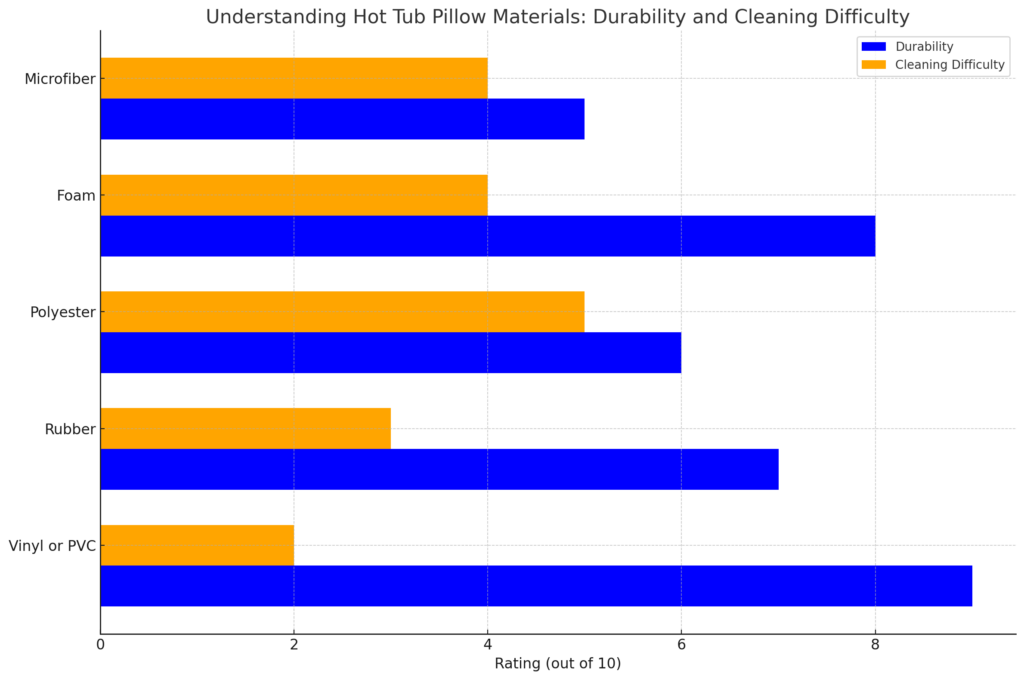
1. Vinyl or PVC: These are among the most common materials used for hot tub pillows. They are durable, water-resistant, and relatively easy to clean. To clean vinyl or PVC pillows, use a mild soap solution and a soft cloth to wipe away dirt and grime. Avoid abrasive cleaners, as they can damage the material and lead to discoloration.
2. Rubber: Rubber pillows offer a soft and comfortable texture. Cleaning rubber pillows involves using a gentle soap solution and a soft brush to scrub away dirt. Avoid harsh brushes or abrasive cleaners, as they can wear down the rubber surface.
3. Polyester: Some hot tub pillows feature polyester covers that provide a plush and luxurious feel. To clean polyester pillows, remove the cover (if possible) and wash it according to the manufacturer’s instructions. For the inner pillow, spot cleaning with a mild detergent is recommended.
4. Foam: Foam-filled pillows offer excellent support and comfort. These pillows can accumulate dirt and moisture over time. Spot clean foam pillows with a mixture of water and mild detergent, then allow them to air dry thoroughly before placing them back in the hot tub.
5. Microfiber: Microfiber pillows are known for their softness and water-absorbing properties. For these pillows, remove the cover if possible and wash it according to the care instructions. If the inner pillow becomes damp, allow it to dry completely before use to prevent mold growth.
How to Clean Hot Tub Pillows
Maintaining your hot tub pillows involves more than just a quick rinse. A thorough cleaning routine ensures that your pillows remain inviting, hygienic, and in top-notch condition. Follow the steps enumerated below to clean your hot tub pillows effectively.
In addition to cleaning pillow, overall hot tub cleanliness is also important. Dive into our comprehensive article on how to clean your hot tub to ensure your relaxation oasis remains sparkling and inviting. Learn expert tips, step-by-step instructions, and essential dos and don’ts to maintain water clarity, hygiene, and equipment longevity.
Step 1. Gather Necessary Supplies
Having the right tools and supplies at hand is essential to ensure a thorough and effective cleaning of your hot tub pillows. Here’s a detailed explanation of each item you’ll need:
- Soft Cloth or Sponge: Choose a soft, non-abrasive cloth or sponge to avoid damaging the material of the pillows. A gentle touch is crucial, especially if your pillows are made of delicate materials like foam or fabric.
- Mild Soap: Opt for a mild, pH-neutral soap that is free from harsh chemicals. Harsh soaps can cause fading, discoloration, or deterioration of the pillow material. Look for soap specifically labeled as suitable for spa or hot tub cleaning.
- Water: You’ll need clean water for rinsing the pillows after cleaning. If possible, use warm water, as it can help in breaking down dirt and grime more effectively.
- Bucket: A bucket will be useful for creating your cleaning solution. It’s convenient for mixing soap and water to the appropriate dilution.
- Hose or Shower Attachment: A hose or a shower attachment with a gentle flow of water can be used for the initial rinsing of the pillows. This helps in removing larger debris or dirt particles before you proceed with the cleaning solution.
- Clean Towel: Keep a clean, dry towel nearby to pat the pillows after rinsing. This helps in removing excess water and prepares the pillows for the drying process.
Step 2. Initial Rinsing and Inspection
When you’re ready to clean your hot tub pillows, the first step involves removing them from the hot tub itself. Once you have the pillows in hand, follow these steps:
- Removing the Pillows: Gently lift the pillows out of the hot tub. Depending on your hot tub model, the pillows might be secured by clips, snaps, or straps. Carefully detach them while being mindful not to pull or damage any attachments.
- Shaking to Remove Debris: Holding each pillow over a designated area, gently shake or tap them to dislodge loose debris, such as dirt, leaves, or small particles. This step helps prevent transferring unwanted material into the cleaning process and your hot tub.
- Inspection: Take a closer look at each pillow’s surface. Examine them for any visible stains, discolorations, or areas that require special attention. Identifying these spots beforehand will guide your cleaning approach and ensure you address specific issues effectively.
- Noting Special Attention Areas: Make mental notes or mark any areas that need extra care during the cleaning process. These could include stains from sunscreen, body oils, or algae growth. Identifying these areas now ensures a targeted cleaning strategy.
Step 3. Pre-Cleaning
Before you proceed with a thorough cleaning using soap and water, it’s important to remove any visible debris or dirt that can be easily washed away. This pre-cleaning step helps ensure that your cleaning solution can work more effectively. Here’s how to do it:
- Prepare for Pre-Cleaning: Position yourself near a water source, such as a hose or a shower attachment. Make sure the water pressure is set to a gentle flow to avoid damaging the pillow material.
- Rinsing Debris: Hold each pillow under the gentle flow of water. Move the hose or shower attachment over the surface of the pillow, directing the water to dislodge larger debris or dirt particles. Pay particular attention to crevices and folds where debris might be trapped.
- Inspecting After Pre-Cleaning: As you rinse each pillow, visually inspect the surface to ensure that visible debris or dirt has been removed. This step is especially helpful for pillows that were subjected to outdoor elements like leaves, insects, or dust.
- Proceeding to the Main Cleaning: Once you’ve pre-cleaned the pillows and removed the larger particles, you’re ready to proceed with the main cleaning process using a mild soap solution.
Step 4. Cleaning Solution
Creating the right cleaning solution is essential for effectively cleaning your hot tub pillows without causing any harm to the material. Here’s how to prepare and use the cleaning solution:
- Choosing the Right Soap: Opt for a mild, pH-neutral soap that is specifically designed for cleaning spa or hot tub accessories. Avoid harsh chemicals, abrasive cleaners, or household detergents, as they can damage the pillow material or cause discoloration.
- Gathering Materials: Get a clean bucket and fill it with warm water. The water temperature should be comfortable to touch, as it helps in breaking down dirt and grime more effectively.
- Mixing the Solution: Add a small amount of the mild soap to the bucket of warm water. The exact ratio of soap to water may vary, but a general guideline is about 1-2 tablespoons of soap per gallon of water. Stir the solution gently to ensure the soap is evenly distributed.
- Testing the Solution: Before applying the solution to the entire pillow, it’s a good practice to test it on a small, inconspicuous area to ensure it doesn’t cause any adverse reactions, such as discoloration or material damage.
- Using the Solution: Dip a soft cloth or sponge into the cleaning solution, then gently wring out any excess liquid. You want the cloth or sponge to be damp, not dripping wet.
- Spot Cleaning and Overall Cleaning: For spot cleaning specific stains or areas, gently scrub the affected spots with the damp cloth or sponge. For an overall clean, you can also use the damp cloth or sponge to wipe down the entire surface of the pillows.
Step 5. Spot Cleaning
Spot cleaning is a targeted approach to address specific stains or soiled areas on your hot tub pillows. By focusing your efforts on these problem spots, you can effectively lift away dirt and stains without affecting the entire pillow. Here’s how to perform spot cleaning:
- Dip the Cloth or Sponge: Dip a soft cloth or sponge into the cleaning solution you’ve prepared. Ensure the cloth or sponge is damp, not soaking wet, to prevent over-saturation of the pillow material.
- Gentle Scrubbing: Gently scrub the stained or soiled areas using the damp cloth or sponge. Apply light pressure and use circular motions to lift the dirt. Avoid excessive force, as aggressive scrubbing can damage the material or cause color fading.
- Focus on Problem Areas: Direct your attention to the specific spots that require cleaning. These could be stains from sunscreen, body oils, algae, or other contaminants. Take your time to work on each spot patiently.
- Regular Inspection: As you scrub, periodically stop to inspect the stain’s progress. If the stain is not lifting easily, avoid the temptation to scrub harder. Instead, consider repeating the process or moving on to the main cleaning of the entire pillow.
Step 6. Full Pillow Cleaning
After spot cleaning and addressing specific stains, it’s time for a comprehensive cleaning of the entire pillow. This step ensures that the entire surface is cleaned uniformly, leaving you with refreshed and hygienic hot tub pillows. Here’s how to perform a full pillow cleaning:
- Submerge in Cleaning Solution: Carefully lower the pillows into the bucket of cleaning solution you’ve prepared. Make sure the entire surface of the pillows is submerged and covered by the solution.
- Gently Agitate: With the pillows submerged, gently agitate them using your hands or a soft cloth. The goal is to encourage the cleaning solution to reach all parts of the pillows and dislodge any dirt or grime that might be clinging to the material.
- Allow Soaking: Let the pillows soak in the cleaning solution for a few minutes. This allows the soap to penetrate and break down any contaminants that might be clinging to the material.
- Avoid Excessive Agitation: While you want to encourage the solution to work its magic, avoid excessive agitation that could damage the pillow material. Be gentle and patient.
Step 7. Rinsing
After completing the cleaning process, the next crucial step is thorough rinsing. Rinsing ensures that any lingering soap residue is removed, leaving your hot tub pillows clean and free from contaminants. Here’s how to perform the rinsing step effectively:
- Prepare for Rinsing: Position yourself near a water source, such as a hose or a shower attachment. You’ll need a continuous flow of clean water for thorough rinsing.
- Lift the Pillows: Gently lift the pillows out of the bucket or cleaning solution. Hold them over a designated area where the rinse water can flow away without causing any mess.
- Thorough Rinsing: Allow clean water to flow over the pillows, thoroughly rinsing all parts of the material. Use your hands to help guide the water and ensure that no soap residue remains.
- Check for Suds: As you rinse, keep an eye out for any suds or bubbles. If you notice any, continue rinsing until the water runs clear and free from soap residues.
- Repeat if Necessary: If you’re uncertain whether all the soap has been rinsed away, repeat the rinsing process until you’re confident that the pillows are completely free from soap residue.
Step 8. Drying
Properly drying your hot tub pillows is the final step in the cleaning process. Ensuring thorough drying prevents the growth of mold or mildew and helps maintain the integrity of the pillow materials. Here’s how to dry your pillows effectively:
- Pat Dry with Towel: After rinsing, gently pat the pillows with a clean, dry towel to remove excess water. Be careful not to twist or wring the pillows, as this can distort their shape.
- Air Drying: Find a well-ventilated area where you can hang or lay the pillows to air dry. This could be a clean, dry surface or a drying rack. Make sure the area is sheltered from rain or moisture.
- Positioning: Arrange the pillows in a way that allows air to circulate around them. This promotes even drying and prevents moisture from getting trapped.
- Avoid Direct Sunlight: While it’s important to dry the pillows in a well-ventilated area, avoid placing them in direct sunlight. Prolonged exposure to sunlight can lead to fading or deterioration of the materials over time.
- Monitor Progress: Check the pillows periodically to assess their drying progress. Depending on the material and weather conditions, drying times may vary.
- Ensuring Complete Dryness: To ensure your pillows are thoroughly dry, touch the material to check for any lingering dampness. Moisture can lead to mold growth, so it’s essential to make sure the pillows are completely dry before reinstallation.
Step 9. Reinstallation
With your hot tub pillows cleaned, thoroughly rinsed, and properly dried, the final step is to reinstall them back onto your hot tub. Reattaching the pillows ensures that your spa retains its comfort, visual appeal, and overall aesthetic. Here’s how to successfully reinstall your hot tub pillows:
- Refer to Manufacturer’s Instructions: Different hot tub models may have varying methods for attaching pillows. Consult your hot tub’s user manual or manufacturer’s guidelines for specific instructions on how to properly reattach the pillows.
- Positioning: Carefully position each pillow in its designated spot. Align any attachment points, such as snaps or clips, with the corresponding areas on the hot tub shell.
- Secure the Pillows: Follow the manufacturer’s instructions to securely fasten the pillows to the hot tub. Ensure they are properly attached and won’t shift or move during use.
- Visual Check: Step back and visually inspect the pillows to ensure they are positioned correctly and securely attached. This is also a good time to admire the refreshed appearance of your pillows.
- Test Comfort: Before enjoying a soak in your rejuvenated hot tub, sit back and ensure that the pillows are as comfortable as they were before the cleaning process. Comfort is key to a relaxing spa experience.
Maintenance Tips for Prolonged Lifespan
Caring for your hot tub pillows goes beyond a one-time cleaning effort. Regular maintenance practices play a significant role in preserving the quality and comfort of your pillows over the long term. Here’s an in-depth look at each maintenance tip to help you make the most out of your hot tub pillow investment:
Regular Inspection and Cleaning: Set aside time for routine checks of your hot tub pillows. Look for signs of dirt, stains, or any wear and tear. By catching problems early, you can address them before they worsen, ensuring your pillows stay in excellent condition.
Prompt Cleaning: Act swiftly when spills or stains occur. Waiting can allow the stain to set, making it harder to remove later. Keep a cloth and mild cleaning solution on hand for quick spot treatments to prevent stains from becoming permanent.
Avoid Chemical Exposure: Maintain proper water chemistry in your hot tub. Balancing chemicals such as chlorine, pH levels, and sanitizers not only ensures safe water but also prevents chemical damage to your pillows. Chemical imbalances can weaken materials over time.
Use Protective Covers: Consider investing in removable, washable pillow covers. These covers act as a barrier, shielding the pillows from direct exposure to water and chemicals. They’re easier to clean and replace, prolonging the life of your pillows.
Rotate Pillows: If your hot tub has multiple pillows, periodically switch their positions. This distributes wear more evenly across all the pillows, preventing one or two from wearing out significantly faster than the others.
Regular Cleaning Schedule: Create a cleaning schedule for your pillows. Depending on usage, a comprehensive cleaning every few weeks is recommended. Spot clean as needed to maintain their appearance and cleanliness between thorough cleanings.
Proper Storage: When your hot tub isn’t in use for extended periods, store your pillows in a dry, well-ventilated area. Avoid folding or compressing them, as this can lead to material damage over time. Storing them properly helps maintain their shape and integrity.
Avoid Sitting on Pillows: Encourage hot tub users to sit on the designated seating areas rather than leaning or sitting directly on the pillows. Excess weight can strain the pillows’ attachments and cause premature wear.
Gentle Handling: Treat your pillows with care when reattaching or removing them. Handle them gently to prevent unnecessary stress on the attachment points or material.
Keep the Hot Tub Covered: Whenever the hot tub is not in use, keep it covered with a suitable hot tub cover. This prevents debris from accumulating on the pillows and protects them from direct exposure to sunlight, reducing the risk of fading.
Mistakes to Avoid While Cleaning
Properly cleaning your hot tub pillows requires more than just good intentions; it demands awareness of potential pitfalls that could inadvertently harm the pillows. Steering clear of these common errors ensures your cleaning efforts yield the desired results and keep your pillows in excellent condition. Let’s delve into these mistakes in detail:
Using Harsh Chemicals: While it might be tempting to use strong chemicals for tough stains, avoid it at all costs. Harsh chemicals, bleach, or abrasive cleaners can weaken the materials, leading to deterioration, color fading, and potential skin irritation during use. Opt for mild, pH-neutral soaps specifically designed for spa accessories.
Scrubbing Too Vigorously: Vigorous scrubbing might seem like the way to tackle stubborn stains, but it can wreak havoc on delicate pillow materials. Aggressive scrubbing can fray fabric or tear foam, irreparably damaging the pillows. Maintain a gentle touch throughout the cleaning process.
Not Testing Cleaning Solutions: Jumping straight into cleaning without testing your chosen solution on a small, inconspicuous area can be a recipe for disaster. Always test the solution on a hidden part of the pillow to ensure it doesn’t cause color fading, material damage, or adverse reactions.
Skipping the Pre-Cleaning Stage: Neglecting the pre-cleaning stage might seem harmless, but it can lead to counterproductive results. Skipping this step allows larger debris to mix into your cleaning solution, leading to ineffective cleaning and potential scratches on the pillow surface.
Using Excessive Water Pressure: High-pressure water might appear effective, but it can force water into the pillow’s interior, promoting the growth of mold and mildew. Maintain a gentle water flow during both pre-cleaning and rinsing stages to prevent this issue.
Neglecting Drying: Rushing the drying phase can lead to long-term issues. Inadequately dried pillows are susceptible to mold and mildew growth, undoing your cleaning efforts. Prioritize thorough drying to maintain the pillows’ hygiene and integrity.
Using Direct Sunlight for Drying: While sunshine is associated with drying, direct sunlight can lead to problems. Prolonged exposure can fade and weaken materials. Opt for a well-ventilated, shaded area to ensure your pillows dry properly without risking damage.
Using Heat Sources for Drying: Speeding up the drying process with heaters or hair dryers might sound convenient, but it can backfire. High heat can distort materials, affect their appearance, and even cause melting or warping.
Ignoring Manufacturer’s Guidelines: Overlooking the care instructions provided by the manufacturer is a big mistake. These guidelines are tailored to the specific materials and construction of your pillows. Always adhere to these instructions for optimal cleaning practices.
Using Household Cleaners: While you might have all-purpose cleaners at home, using them on hot tub pillows is a gamble. These cleaners aren’t designed for spa accessories and can lead to chemical reactions, material damage, and even a compromised water chemistry.
Skipping Regular Cleaning: Waiting too long between cleaning sessions creates an environment where dirt, oils, and contaminants accumulate, making the cleaning process more arduous and time-consuming down the line. Stick to a regular cleaning schedule to maintain manageable upkeep.
Using Rough Surfaces: Employing abrasive materials like rough sponges, brushes, or scouring pads might seem efficient, but they can scratch, damage, or deteriorate the pillow surface. Stick to soft, non-abrasive cleaning tools.
Is it Safe to Use Household Cleaners on Hot Tub Pillows
Using household cleaners on hot tub pillows is generally not recommended. Hot tub pillows are made from specialized materials that can react unpredictably with common household cleaning products. Here’s why it’s safer to avoid using household cleaners:
- Chemical Reactions: Household cleaners often contain chemicals that might not be compatible with the materials used in hot tub pillows. These chemicals can lead to discoloration, deterioration, or adverse reactions that compromise the integrity of the pillows.
- Material Sensitivity: Hot tub pillows are constructed from various materials, including plastics, foams, and fabrics. These materials can be sensitive to certain chemicals found in household cleaners, causing them to break down, become brittle, or lose their softness.
- Health Concerns: Household cleaners can leave residues that may come into contact with your skin or be released into the water when using the hot tub. This can cause skin irritation, allergic reactions, or even affect the water chemistry, leading to discomfort or health risks.
- Aesthetic Damage: Some household cleaners are abrasive and can scratch or damage the surface of the pillows. Additionally, they might cause fading, discoloration, or uneven wear, negatively impacting the appearance of your pillows.
- Water Chemistry: Residues left by household cleaners can disrupt the delicate balance of your hot tub’s water chemistry. This can affect the effectiveness of water treatments and the overall quality of the water.
Safe Cleaning Alternatives
Instead of using household cleaners, opt for cleaning solutions specifically designed for hot tub accessories. These solutions are formulated to be gentle on the materials used in hot tub pillows while effectively removing dirt and contaminants. Look for spa-safe cleaners that are recommended by hot tub manufacturers or spa professionals.
When choosing cleaning products, ensure they are:
- Mild: Choose products that are mild and free from harsh chemicals.
- Spa-Specific: Look for cleaners labeled for use on spa or hot tub accessories.
- Compatible: Ensure the product is compatible with the materials of your pillows.
Regular maintenance and proper care using spa-specific cleaning solutions will help you maintain the quality and appearance of your hot tub pillows without risking damage or compromising your hot tub experience.
How Often Should I Clean My Hot Tub Pillows
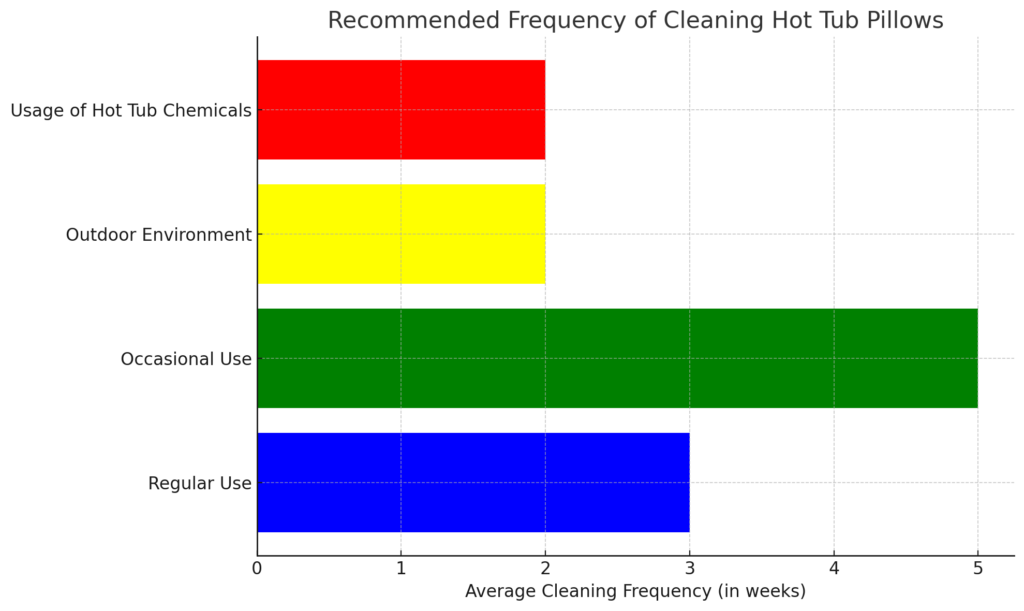
The frequency of cleaning your hot tub pillows depends on several factors, including how often you use your hot tub, the environment in which it’s located, and the level of exposure to contaminants. As a general guideline, consider the following recommendations:
- Regular Use: If you use your hot tub frequently, it’s advisable to perform a thorough cleaning every 2 to 4 weeks. Regular use exposes the pillows to body oils, lotions, and other substances that can accumulate over time.
- Occasional Use: For hot tubs that are used less frequently, a thorough cleaning every 4 to 6 weeks is typically sufficient. However, remember to inspect the pillows regularly for any visible dirt or stains.
- Outdoor Environment: If your hot tub is outdoors, it’s more susceptible to environmental elements like dust, pollen, leaves, and insects. In this case, you might need to clean your pillows more frequently, especially during pollen-heavy seasons or after storms.
- Usage of Hot Tub Chemicals: The chemicals you use to maintain water quality in your hot tub can affect the pillows. If you use a lot of chemicals, more frequent cleaning might be necessary to prevent chemical buildup on the pillow surfaces.
- Signs of Contamination: If you notice visible stains, discolorations, or an unpleasant odor coming from your pillows, it’s a clear sign that cleaning is needed, regardless of the usual cleaning schedule.
- Special Events or Gatherings: If you’re planning to have guests over or host a special event in your hot tub, consider giving the pillows a thorough cleaning beforehand to ensure a fresh and inviting environment.
Can I Machine Wash My Pillows
Machine washing hot tub pillows might seem convenient, but it’s generally not recommended. Hot tub pillows are designed using specialized materials that can be sensitive to the conditions of a washing machine. Here’s why it’s best to avoid machine washing:
- Delicate Materials: Hot tub pillows often consist of delicate fabrics, foam fillings, and attachment mechanisms. Machine washing can subject these materials to agitation and mechanical stress, potentially causing tears, deformities, or detachment of components.
- Loss of Shape: The mechanical action of a washing machine, especially during the spin cycle, can distort the shape of the pillows. Misshapen pillows might not fit properly when reattached to your hot tub.
- Water Absorption: Some materials used in hot tub pillows can absorb water and moisture. Machine washing could lead to excessive water absorption, prolonging the drying process and potentially causing mold or mildew growth.
- Attachment Damage: The attachments or clips that secure the pillows to the hot tub can become damaged or broken in a washing machine. This can render the pillows unusable or require costly repairs.
- Chemical Reactions: Hot tub pillows might react negatively to the detergents and chemicals commonly used in washing machines. This can lead to color fading, material degradation, or unexpected chemical interactions.
What Can I Do About Mold Inside the Pillow
Discovering mold growth inside your hot tub pillows can be concerning, but with proper action, you can effectively address the issue and prevent further complications. Follow these detailed steps to deal with mold inside your hot tub pillows:
- Isolate the Affected Pillows: As soon as you identify mold growth within your hot tub pillows, remove the affected pillows from your hot tub. This prevents the mold from spreading to other surfaces and water.
- Wear Protective Gear: Mold can release spores that may pose health risks when inhaled or touched. Put on protective gear, including gloves, a mask, and eye protection, before handling the moldy pillows.
- Take the Pillows Outdoors: Move the moldy pillows to an outdoor area with good ventilation. This prevents mold spores from circulating indoors and provides a safer environment for addressing the issue.
- Brush Off Loose Mold: Gently use a soft brush or cloth to remove any loose mold from the surface of the pillows. Perform this step outdoors to avoid releasing mold spores indoors.
- Utilize Sunlight: If weather conditions permit, place the pillows in direct sunlight. Sunlight has natural disinfecting properties that can help eliminate mold spores. However, avoid excessive exposure to sunlight to prevent material damage.
- Prepare a Mild Cleaning Solution: Create a cleaning solution by mixing warm water with a mild, non-abrasive soap. Dampen a soft cloth or sponge with the solution, ensuring it’s not overly wet.
- Gentle Cleaning: Gently wipe down the areas affected by mold using the damp cloth or sponge. Apply light pressure to avoid damaging the pillow’s materials. This step helps remove residual mold and sanitize the surface.
- Consider Vinegar Solution: If the mold persists, consider using a mixture of equal parts white vinegar and water. Vinegar is known for its natural antimicrobial properties. Wipe down the moldy areas with this solution to further combat mold growth.
- Thorough Rinsing: After cleaning, rinse the pillows thoroughly with clean water. This step ensures that no traces of the cleaning solution or vinegar remain on the pillows.
- Drying Process: Place the pillows in a well-ventilated area to air dry completely. Adequate drying prevents moisture accumulation, which is essential for inhibiting future mold growth.
- Inspect for Regrowth: Once the pillows are fully dry, inspect them closely for any signs of mold regrowth. Pay attention to seams, folds, and crevices where moisture can collect.
- Preventive Measures: To prevent future mold issues, maintain proper water chemistry in your hot tub and ensure the area is well-ventilated. Regularly inspect and clean your pillows to prevent any buildup of moisture or contaminants.
How to Restore an Old Hot Tub Pillow
Over time, hot tub pillows can show signs of wear, fading, and deterioration. While complete restoration might not always be possible, there are several steps you can take to revitalize and improve the appearance of your old hot tub pillows:
- Thorough Cleaning: Begin by giving the pillows a thorough cleaning. Follow the cleaning process mentioned earlier in this guide to remove dirt, stains, and contaminants that might be contributing to their aged appearance.
- Spot Treatment: For stubborn stains, consider using specific stain removers that are safe for the pillow material. Always test any cleaning solution on a small, inconspicuous area before applying it to the entire pillow.
- Color Restoration: If the fabric has faded, you can try using fabric dye or color enhancers specifically designed for the type of material in your pillows. Follow the manufacturer’s instructions carefully to achieve the desired results.
- Attachment Repair: If the attachment mechanisms are loose or damaged, you might be able to repair or replace them. Consult your hot tub’s manufacturer or a professional for guidance on how to secure or replace attachment components.
- Pillow Covers: Consider using removable, washable pillow covers to give your old pillows a fresh look. Covers not only protect the pillows but also offer an opportunity to introduce new colors or patterns.
- Foam Replacement: If the foam inside the pillows has lost its support, you might be able to replace the foam inserts. Check with the manufacturer or a professional to see if replacement foam is available.
- Seam Repair: If there are small tears or loose seams, you can attempt to sew them up using a heavy-duty thread that matches the pillow’s color. Keep in mind that larger tears might be more challenging to repair effectively.
- UV Protectant: Apply a UV protectant spray to the pillow’s surface to help prevent further fading and sun damage. Regular application can extend the life of the pillows and maintain their appearance.
- Material-Specific Care: Different materials require different care approaches. Research and follow material-specific care guidelines to ensure you’re using the right techniques and products for restoration.
- Consider Professional Help: If your pillows require extensive repairs or restoration beyond your expertise, consider seeking help from a professional who specializes in hot tub accessories or upholstery repair.
- Temporary Solutions: If you’re looking for a temporary solution to make your pillows more presentable, decorative towels or blankets can be draped over the pillows. Just ensure they don’t interfere with the hot tub’s operation.
When to Replace Hot Tub Pillows
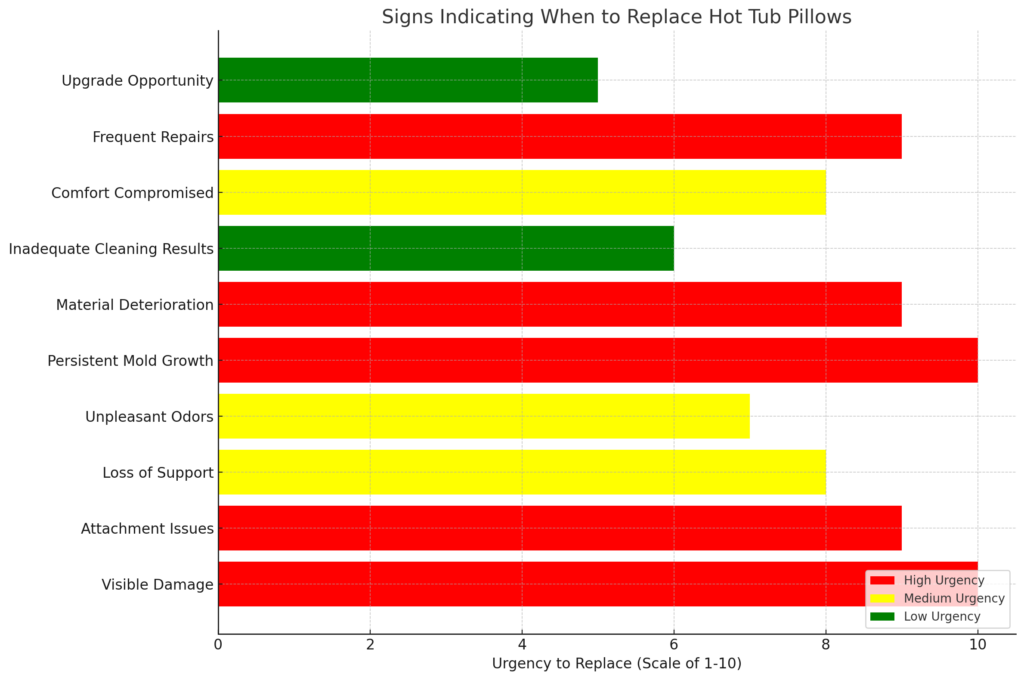
Hot tub pillows play a crucial role in enhancing your relaxation and comfort while using your spa. However, over time, these accessories can experience wear and tear due to constant exposure to water, chemicals, and environmental factors. Here are some signs that indicate it’s time to replace your hot tub pillows:
- Visible Damage: If you notice cracks, tears, or significant fading in the pillow material, it’s a clear indicator that the pillows have reached the end of their lifespan. Damaged pillows not only affect aesthetics but can also compromise comfort and support.
- Attachment Issues: If the attachment mechanisms such as snaps, clips, or straps are broken or no longer secure properly, it’s time to consider replacing the pillows. Inadequate attachment can lead to discomfort and instability.
- Loss of Support: Over time, the foam or filling inside the pillows may lose its resilience and support. If you find that the pillows no longer provide the cushioning and comfort they used to, it’s a sign that replacement is necessary.
- Unpleasant Odors: Mold, mildew, and bacteria can develop within pillows, causing unpleasant odors that persist even after cleaning. If you’ve thoroughly cleaned the pillows and the odor remains, it might be time to invest in new ones.
- Persistent Mold Growth: Despite your efforts to address mold, if it continues to grow within the pillows, replacement is a practical solution. Mold can be challenging to completely eradicate, and moldy pillows can negatively impact your hot tub experience.
- Material Deterioration: Hot tub pillows are exposed to water, chemicals, and sunlight, which can lead to material degradation over time. If the fabric feels brittle, stiff, or excessively worn, it’s an indication that the pillows need replacing.
- Inadequate Cleaning Results: If your pillows no longer respond well to cleaning efforts and stubborn stains persist, it’s a sign that the materials might be beyond restoration. Replacement ensures you have clean and hygienic pillows.
- Comfort Compromised: Hot tub pillows are designed to provide comfort and support. If you find that using the pillows is no longer comfortable or that they lack the intended ergonomic design, it’s time to invest in new ones.
- Frequent Repairs: If you find yourself constantly repairing your pillows due to attachment issues, tears, or other problems, it might be more cost-effective and practical to replace them altogether.
- Upgrade Opportunity: If you’re looking to refresh the look of your hot tub or upgrade to more advanced and comfortable pillow designs, it’s a good opportunity to replace your existing pillows.
Conclusion
Maintaining clean and hygienic hot tub pillows is a crucial aspect of overall hot tub care and enjoyment. By following the simple steps outlined in this guide, you can ensure that your hot tub pillows remain free from dirt, oils, and residue, providing you with a comfortable and relaxing experience every time you soak.
Regular cleaning not only enhances the aesthetic appeal of your hot tub but also contributes to the overall cleanliness and hygiene of the water. Remember, a small amount of care and attention can go a long way in preserving the longevity and beauty of your hot tub pillows. So, keep these cleaning tips in mind and enjoy the soothing comfort of your hot tub to the fullest.
Frequently Asked Questions
1. Why do my hot tub pillows stink?
Hot tub pillows can develop unpleasant odors due to the accumulation of oils, lotions, sweat, and other contaminants over time. Mold and mildew growth can also contribute to a musty smell. Regular cleaning and proper maintenance can help prevent and eliminate these odors.
2. How long do hot tub pillows last?
The lifespan of hot tub pillows varies based on factors such as usage frequency, exposure to elements, and maintenance. On average, well-maintained pillows can last anywhere from 2 to 5 years. Signs of wear, discoloration, or loss of support are indicators that replacement might be necessary.
3. How do you disinfect a pillow you can’t wash?
To disinfect a pillow that can’t be washed, you can use a mixture of water and white vinegar. Spray the solution onto the pillow and allow it to sit for a few minutes. Gently wipe with a clean cloth and allow the pillow to air dry. The vinegar’s antimicrobial properties help eliminate germs and odors.
4. Does vinegar clean pillows?
Yes, white vinegar can effectively clean pillows by breaking down oils, killing bacteria, and neutralizing odors. However, for pillows with specialized materials like those used in hot tubs, it’s recommended to use cleaning products specifically designed for spa accessories to prevent damage.
5. Why are my hot tub pillows melting?
Hot tub pillows melting can occur due to exposure to high temperatures, strong chemicals, or direct sunlight. Some materials used in hot tub pillows might not be heat-resistant, leading to warping, melting, or distortion. It’s important to follow manufacturer guidelines for hot tub usage and maintenance to avoid such issues.
6. Can you use Dawn to clean a hot tub?
While Dawn dish soap is mild and gentle, it’s not specifically formulated for cleaning hot tubs and their accessories. It’s best to use cleaning products designed for spa use to prevent potential damage to your hot tub’s components and accessories, including pillows.
